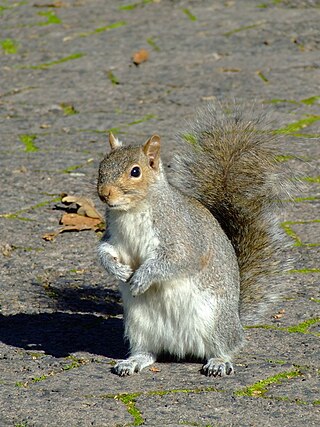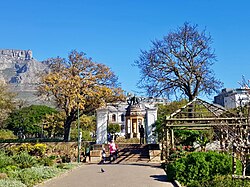Top Qs
Timeline
Chat
Perspective
Company's Garden
Park and heritage site in Cape Town, South Africa From Wikipedia, the free encyclopedia
Remove ads
The Company's Garden is the oldest garden in South Africa, a park and heritage site located in central Cape Town.[1] The garden was originally created in the 1650s by the region's first European settlers and provided fertile ground to grow fresh produce to replenish ships rounding the Cape. It is watered from the Molteno Dam, which uses water from the springs on the lower slopes of Table Mountain.[2]
Remove ads


Remove ads
History
Summarize
Perspective
The Dutch East India Company established the garden in Cape Town for the purpose of providing fresh vegetables to the settlement as well as passing ships. Master gardener and free burgher Hendrik Boom prepared the first ground for sowing of seed on 29 April 1652. The settlers sowed different kinds of seeds and kept record thereof each day. Through trial and error they managed to compile a calendar which they used for the sowing and harvesting throughout the year. At first they grew salad herbs, peas, large beans, radish, beet, spinach, wheat, cabbage, asparagus and turnips among others. They caught fish, trapped wild animals and traded with the Khoisan for cattle and sheep with copper and tobacco. By 1653 the garden allowed the settlers to become self sustainable throughout the year. As the settlement grew, additional farming land was prepared at Rondebosch in 1656. By 1658 nearly every garden plant of Europe and India was already cultivated in the garden, though potatoes and maize were not yet introduced.[3]
Before 1680 the Company's Garden was mainly used to produce vegetables, until Simon van der Stel laid out the ground afresh for the purpose of beautifying the garden. During the 17th century the garden was made famous by writers of various nationalities, claiming that visitors who had seen the most celebrated gardens of Europe and India were agreed that nowhere else in the world was so great a variety of trees and shrubs of vegetables and flowers to be met with together. The garden superintendent and Botanist Hendrik Bernard Oldenland compiled a herbarium which was sent to the Netherlands after his sudden death. In 1770 the 'Catalogue of Plants' was found in possession of Professor Burmann of Amsterdam.[4]
Remove ads
Features in the park
- The oldest cultivated pear tree in South Africa (circa 1652)
- A rose garden designed and built in 1929
- A well stocked fish pond
- Dellville Wood Memorial Garden, which commemorates the World War I Battle of Delville Wood in France, in which a predominantly South African force of more than 3,000 soldiers was reduced to 755 survivors by German forces
- An aviary
- Restaurant – The Company's Garden Restaurant
- Botanically and historically valuable trees
- Local arts and crafts along the avenue
- Lawns and benches
- A herb and succulent garden
- Historic statues
- Iziko South African Museum and Iziko National Gallery
- Various wild, feral and semi-domesticated species of birds and animals, including the African turtle dove, laughing dove, rock dove, Egyptian goose and squirrels.
Remove ads
Monuments
Summarize
Perspective
Nearby places of interest
- Parliament and Tuynhuys are adjacent to the park
- National Library of South Africa
- St George's Cathedral
- Slave Lodge
- Centre for the Book
- Gardens Shul, South African Jewish Museum
- Cape Town Holocaust Centre
- Hiddingh Campus, University of Cape Town
- Mount Nelson Hotel
Events
- The Company's Garden hosts the annual Cape Town Festival.
- Cape Peninsula University of Technology usually has the annual walking/city tour that concludes at the garden.
See also
References
External links
Wikiwand - on
Seamless Wikipedia browsing. On steroids.
Remove ads













